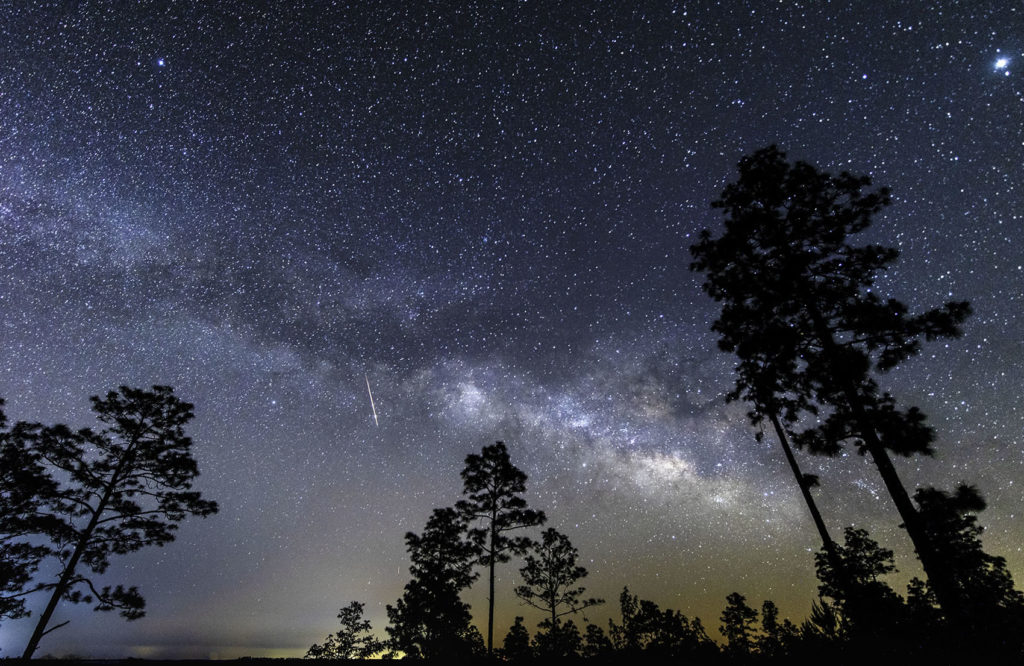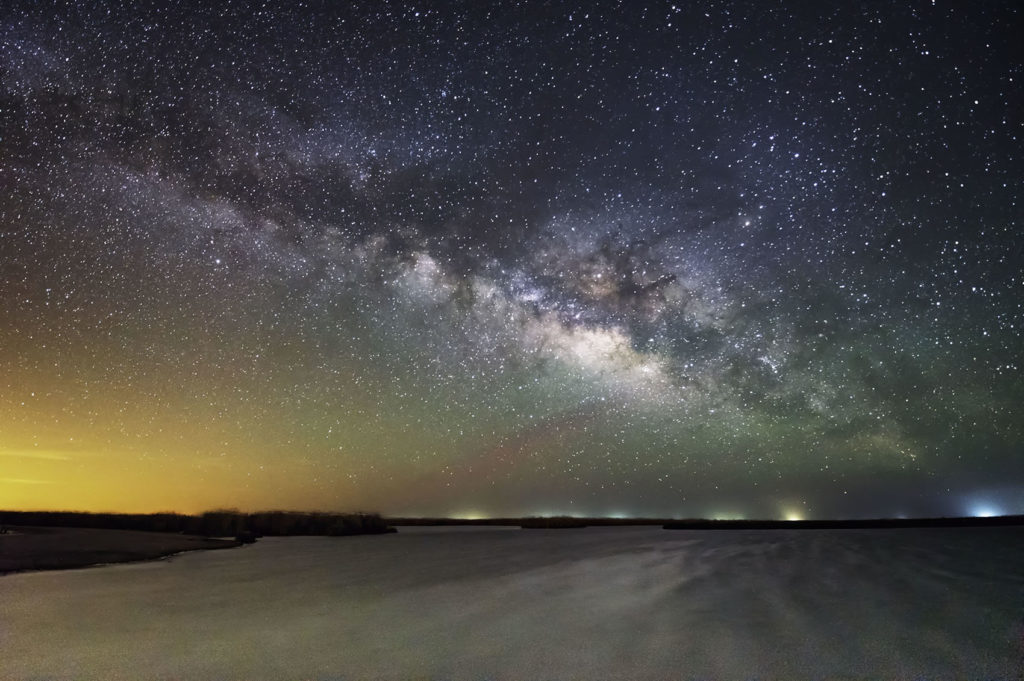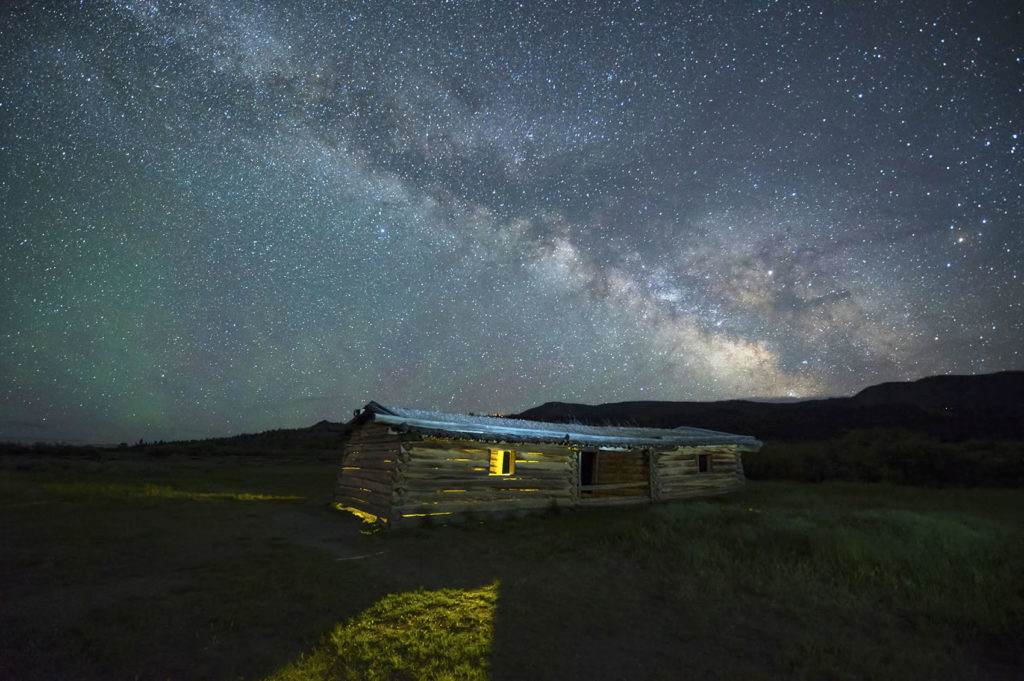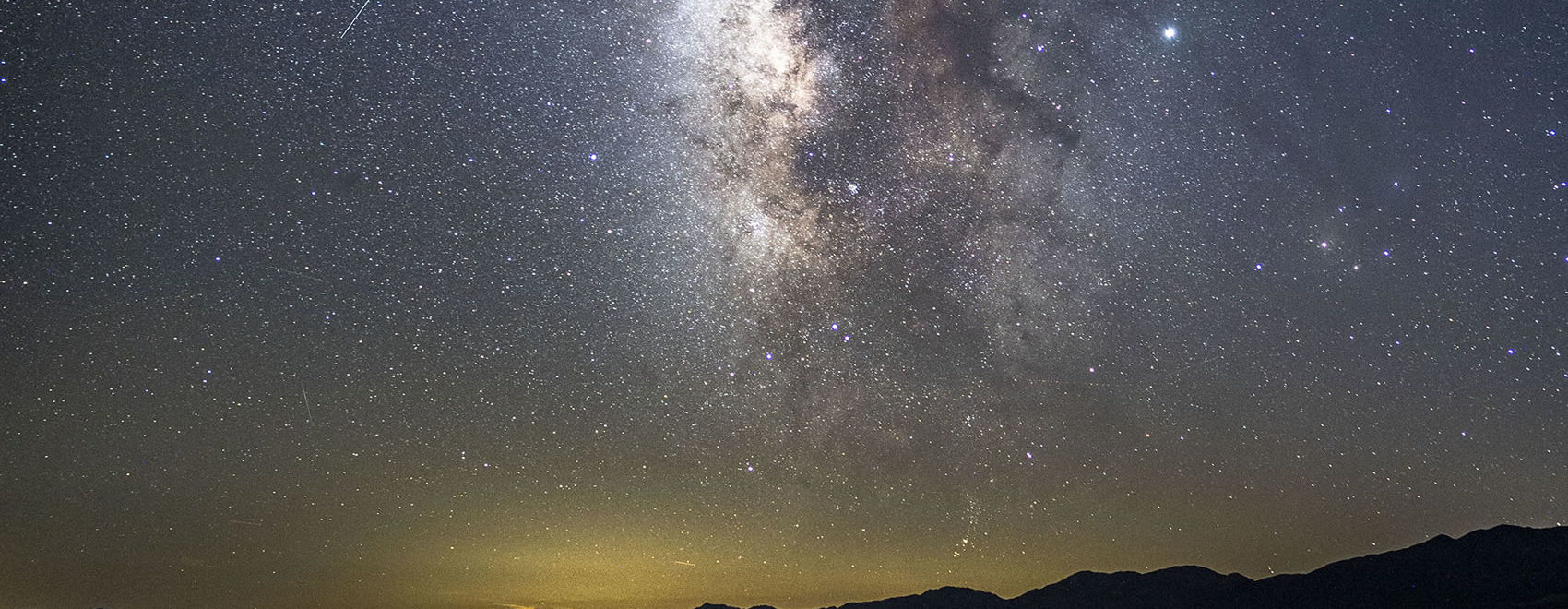Seeing the milky way in Louisiana can be a challenge. You have to time your stargazing to a night when the moon is not lighting up the night sky and hiding many of the stars. It’s also necessary to get far away from light pollution. It’s amazing how few stars we see near our neighborhoods and cities. I’ve been able to photograph the milky way at several western national parks that are known for their dark night sky.
You simply wait for a few days near the time of the new moon, pick a location where you have a long view of the southeastern sky, and wait for the faint cloud of stars, the milky way, to rise above the horizon. After my western dark sky experiences, I was determined to see and photograph the milky way in my home state of Louisiana. I picked a moonless night when I knew the sky would be clear and drove to the Longleaf Vista Overlook in the Kisatchie National Forest.
I set up my tripod on a sidewalk in front of my parked car. I had a relatively clear view of the southeastern sky from an elevation above the tall pines of the forest. And there it was! Despite the glow of lights on the horizon from towns or industries 20 to 30 miles away, the sky was dark enough for me to capture the brilliant display of the center of our galaxy.

I stood there, gazing into the night sky, hitting the shutter release on my camera repeatedly as the milky way slowly rose above the forest. And my persistence paid off when the flaming tail of a shooting star streaked across the sky. These moments are a gift.
Using Adobe Lightroom, I was able to stitch together a series of still images to create this time lapse of the milky way rising over the Kisatchie National Forest.
Interested in photographing the Milky Way?
If you have a digital camera that you can control with manual settings, you may be able to take your own pictures of this celestial star show.

Photographing the Milky Way – A step-by-step guide to capturing amazing images of the stars.
WHAT YOU NEED:
- Digital camera with manual settings. A full-frame sensor is best, but APS-C, Four-Thirds and even a one-inch sensor will work.
- Fast wide angle lens: F/2.8 or faster, 14mm-20mm best
- Tripod
- Dark sky. Get away from light pollution. Also check times of moonrise or setting. The new moon is the best time for finding dark sky. To photography the milky way, you need an unobstructed view from the south to east. There are apps that help you plan the best time and locations for milky way photography.
SHOOTING CAMERA IN MANUAL MODE:
- Shoot RAW or RAW + JPEG (Raw allows you to better post processing in Photoshop or Lightroom or your favorite image processing software
- Turn off Auto Focus and set manual focus to infinity. Take a few test shots and zoom in on your captured image to make sure stars are sharp
- Turn off long exposure noise reduction
- Set ISO at 3200 to start, then adjust as needed
- Set white balance between 3400-3800K
- Set aperture to widest possible opening – F/2.8 or lower
EXPOSURE TIME:
With extreme wide-angle lens, 12mm-15mm, start with exposure of 20-30 seconds. Then check image to see if stars are pinpoint sharp, or if there is slight blurring from star movement. With longer lenses (more magnification) 18-35m, you will likely need exposure of 10-20 seconds to get sharp stars. Also make sure tripod is study and add a sandbag if windy.
Use camera’s 2-second delay for shutter release, or a remote shutter release, to avoid any camera movement from pressing shutter release.
LIGHT PAINTING:
If you want to add detail to foreground features, trying light painting. Use a flashlight to sweep light across a nearby object. This takes practice to determine the best amount of light to use. You will be surprised how bright the extra light is during a long exposure.



Ms.BlackBoots
Thank you for such an informative post. I purchased the Gskyer telescope 70mm aperture 400mm for my son and I. Still learning how to use it and I’ve been searching for a place to stargaze.
Codey
About where were you in kisatchie buddy? I’m not far from there.
Dave McNamara
Hi Codey, I took the Kisatchie photos from the Longleaf Vista Recreation area. Easy access and nice elevation that gives you a decent view of the horizon to the southeast. Been there several times and taken some pics from the sidewalk along the overlook. Have also used the trail that starts at the parking lot. Here’s a link. https://www.fs.usda.gov/recarea/kisatchie/recarea/?recid=34817
Israel
Hey! Is the Milky Way visible with naked eye here?
Dave McNamara
Yes….but… You need to visit on a clear, moonless night. Otherwise the brighter moonlight will obscure many of the stars. This time of year the milky way is best viewed from about 10pm-1am in the south to south-southwestern sky. If you have never viewed it before, it will look like a thin cloud rising from the horizon. The photographic images are the result of a long exposure with a fast, wide angle lens which absorbs more light and makes the milky way appear brighter. The images are also processed to enhance the starlight and darken the sky. I’ve posted more information on my website with tips for viewing and photographing the milky way: https://heartoflouisiana.com/milky-way/
David Fernandez
What time of year was these pictures taken?
Dave McNamara
These were taken late Spring – early Summer.